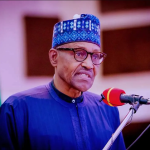A new report by Henley and Partners has revealed that Nigeria, Africa’s largest economy, experienced negative millionaire growth of 30 per cent from 2012 to 2022, resulting in 2,949 individuals losing their millionaire status in one decade.
The 2023 Africa Wealth Report indicated that Africa’s ‘Big 5’ wealth markets include South Africa, Egypt, Nigeria, Kenya, and Morocco. Together, they account for 56 per cent of Africa’s high-net-worth individuals and over 90 per cent of the continent’s billionaires. South Africa has the highest number of millionaires at 37,800, followed by Egypt with 16,100, and Nigeria with 9,800. However, total high-net-worth individual numbers in Africa fell by 12 per cent between 2012 and 2022. The continent currently has 138,000 millionaires, 328 centimillionaires, and 23 billionaires.
The report revealed that “Rwanda was the top-performing market in Africa, with millionaire growth of 72 per cent, followed by Mauritius, the Seychelles, Uganda, and the Democratic Republic of the Congo. Morocco and Kenya’s high-net-worth individual populations also grew solidly.” On the other hand, “Ethiopia and Ghana, whose millionaire populations had been growing rapidly until 2019, have struggled over the past few years, which pulled back their 10-year growth rates.”
Although five out of Africa’s top 20 saw a decline in their wealth in the past decade, none was more significant than Nigeria’s, where 30 per cent of the wealthiest individuals fell below the million-dollar mark. According to development economist Aliyu Ilias, the decline is a natural result of several factors, including poorly-implemented government policies, the Covid-19 pandemic, and soaring inflation experienced in the past eight years of the Buhari regime.
Experts argue that the incoming administration must take urgent steps to address the challenges that limit growth and promote wealth creation. These measures, they argue, can help to create a more equitable and prosperous economy. The 2023 Africa Wealth Report highlights the need for policymakers to promote more inclusive economic growth policies and address the structural challenges that limit growth.



